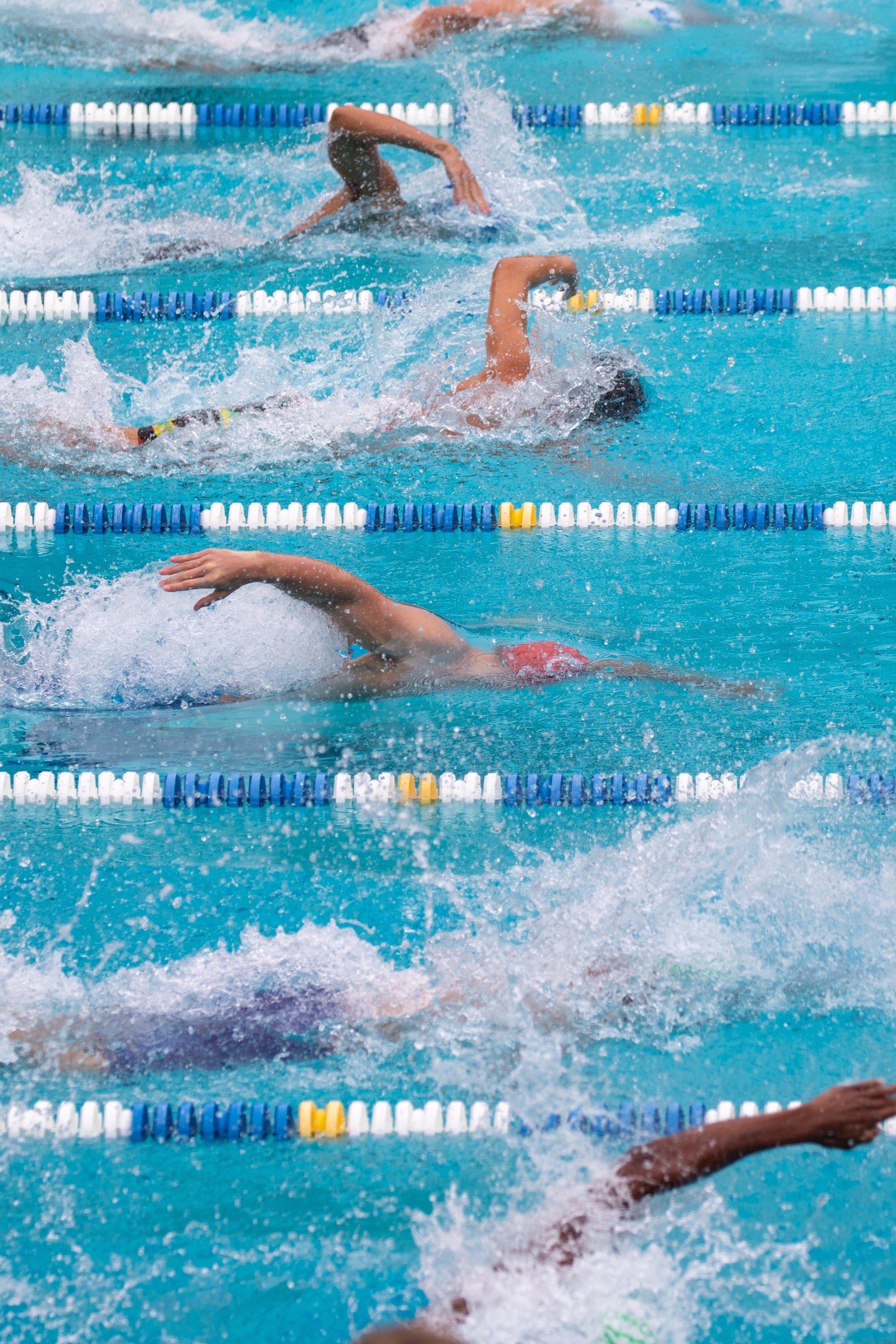
Advies & Tips
5 Tips for the breast crawl swim stroke
By
Peter van Dartel
23 Jun 2023
With the opening of the outdoor swimming season, it's time for triathletes and swimmers to give their swimming performance a once-over. And when it comes to speed and efficiency in the water, no stroke is more essential than the breast crawl, also known as the freestyle. With streamlined posture, rhythmic breathing and powerful arm and leg movements, the breaststroke allows you to cut through the water, maximizing your speed and conserving energy. It's a swimming skill that paves the way for a successful triathlon, where you can flawlessly transition from water to land.
To help you with your technique, we've compiled 5 tips so you can be the first to cross the finish line this summer!
BODY POSITION
Good posture is extremely important for a perfect chest crawl.
So how do you do it?
Start by lying face down in the water with your arms extended forward. Keep your body parallel to the surface of the water, with your head in line with your spine. Practice using a Kickboard or swim fins maintaining this streamlined position to reduce drag and improve efficiency.
Be sure to tighten your abdominal muscles to keep your body stable and your hips high in the water. This helps to distribute your body weight evenly and promotes efficient propulsion.
More helpful tools for swimming faster to the finish line can be found here!
BREAKING
Efficient breathing is important for any endurance athlete, and also essential for a successful chest crawl.
Practice breathing bilaterally, inhaling on one side and exhaling on the other, to master your breathing technique. Take deep breaths and exhale smoothly into the water.
Make sure you turn your head to breathe and not your whole body. This minimizes resistance and helps you get a steady flow of oxygen while swimming.
Experiment with different breathing patterns and find out what works best for you.
ARM MOVEMENT
Focus on high elbow engagement when performing the breast crawl. This involves your hand entering the water in front of your shoulder and your forearm and hand forming a right angle. This position generates more power and propulsion.
Be sure to relax your hand during the underwater phase and have a firm grip during the pulling motion.
Practice making long strokes and be sure to keep your elbows high. This will help you catch more water and improve your forward motion. In addition, you can use a Hand Paddle to practice this technique.
BEATENLAG
Use your legs for balance and propulsion in the breast crawl.
Instead of using only your knees, engage your hip muscles to generate a powerful and efficient leg stroke.
Focus on an even and controlled movement, keeping your legs relatively straight with a slight bend at the knees.
Avoid splashing too much and focus on creating a steady flow of power through your legs. This will help you keep your body balanced and contribute to your overall propulsion in the water.
RITME
Creating a consistent breathing rhythm is important to maintain a steady stroke and avoid breathlessness.
Coordinate your breathing with your arm movement, inhaling during the recovery phase and exhaling when your face is in the water. This helps you maintain a constant oxygen level and gives you a regular rhythm to swim at.
Focus on maintaining a steady cadence, with your arms, legs and breathing working in harmony. This will help you swim more efficiently and reduce fatigue.
All in all, with these 5 tips you can improve your chest crawl technique and speed up your swim times.
Remember, it is important to practice regularly and be patient while learning new techniques. Take the time to understand and practice each tip, and then apply them together in your swimming routine.
With good posture, breathing technique, arm movement, leg stroke and rhythmic pattern, you will find that your chest crawl gains speed, efficiency and enjoyment.
So dive into the water, practice these tips and swim to the finish line with confidence!
QUESTIONS?
Contact us via our website, phone or social media to reserve a wetsuit or if you have any questions. We are ready to help and advise you. Our team of experts is ready to answer all your questions and provide you with personalized advice based on your specific needs and goals.











